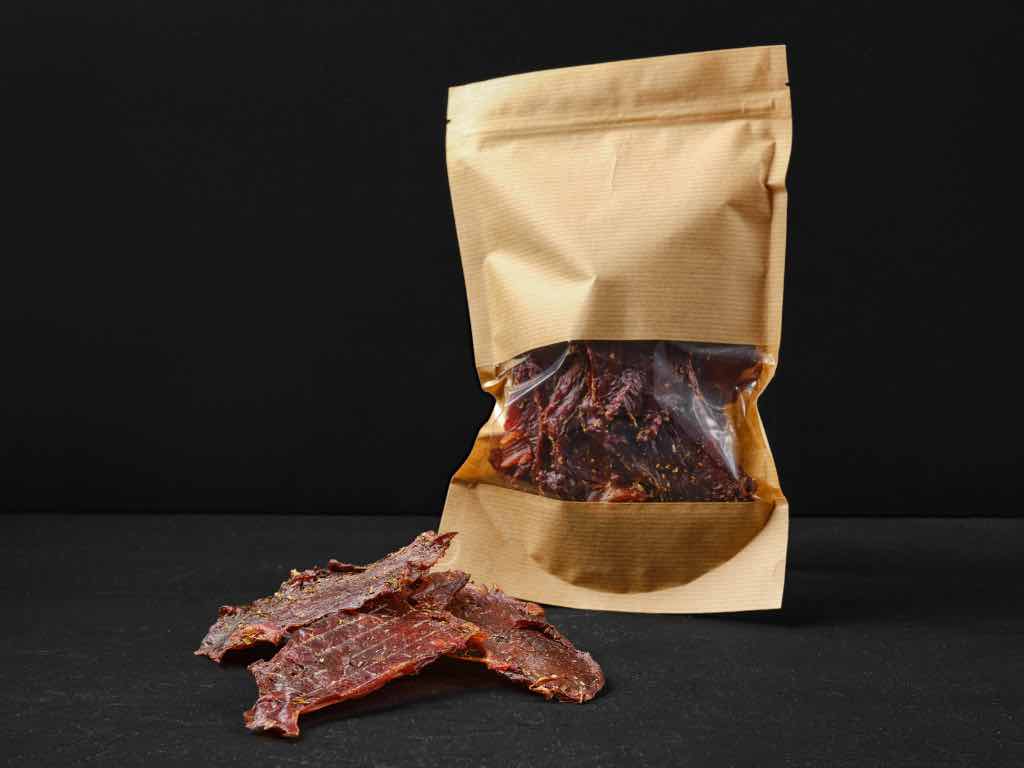
What is Beef Jerky: A Delicious Journey Through History
|
|
Time to read 5 min
Welcome to One Stop Halal!
Written by: Najma A.
|
|
Time to read 5 min
Beef jerky is more than just a savory snack; it is a culinary tradition that dates back thousands of years. Whether you’ve discovered it on a road trip, packed it for a hiking adventure, or enjoyed it as a midday snack, beef jerky is a versatile and convenient food with a rich history and a unique place in modern diets. In this blog, we’ll discuss what is beef jerky, its origins, process, nutritional profile, and contemporary cultural significance.
At its core, beef jerky is lean meat trimmed with fat, cut into strips, and dried to prevent spoilage. The drying process typically involves salting the meat to inhibit bacterial growth and dehydrating it. The result is a dense, chewy snack that can be stored without refrigeration, making it a practical food for long journeys and outdoor activities.
The concept of drying meat to preserve it isn't new. Indigenous peoples across various cultures developed methods to dry and cure meat centuries ago. The word "jerky" itself is derived from the Quechua word "ch'arki," which means "dried, salted meat." Native American tribes such as the Lakota, the Navajo, and the Comanche would often dry buffalo meat. This practice ensured they had a reliable food source when hunting was scarce.
Other cultures around the world have their versions of dried meat. For example, in South Africa, "biltong" is a similar product, but it is cured with vinegar and various spices before being dried. In Europe, particularly in Scandinavia, dried reindeer or elk meat is a traditional food. The preservation method might differ slightly, but the principle remains: removing moisture from the meat to prolong its shelf life.
Making best beef jerky is both an art and a science. Here's a step-by-step look at how it's typically done:
Beef jerky is a nutrient-dense food, making it a popular choice for those looking to add protein to their diet. Here's a breakdown of its nutritional profile:
While beef jerky can be a healthy snack option, there are a few considerations to keep in mind:
Beef jerky has grown in popularity in recent years, partly due to the rise of protein-centric diets. It's marketed as a snack and a functional food for athletes, bodybuilders, and health-conscious individuals. The convenience of jerky makes it a go-to option for people with busy lifestyles who need a quick, nutritious bite.
In addition to traditional flavors, there is now a burgeoning market for gourmet beef jerky. Artisanal producers experiment with various flavors and ingredients, from sweet teriyaki and smoky chipotle to exotic blends like mango habanero and Korean BBQ. These gourmet varieties often use higher-quality meats and natural ingredients, catering to a more discerning palate.
With the growing awareness of sustainability and ethical food production, some jerky producers have begun to focus on grass-fed, organic, and responsibly sourced meats. This shift appeals to environmentally conscious consumers and supports better animal welfare practices.
Making beef jerky at home is a rewarding experience for those who prefer a hands-on approach. Here’s a simple recipe to get you started:
Welcome to Butcher Shop that is 1-click away. We carry various meat cuts and jerky collection that are hard to find elsewhere. We deliver to your doorstep anywhere in the United States within 1-2 business days.
Beef jerky is a testament to human ingenuity in food preservation and a delicious, nutritious snack that has stood the test of time. Its journey from ancient preservation technique to modern gourmet treat showcases its versatility and enduring appeal. Whether you enjoy it for its rich protein content, convenience, or deep beef jerky flavors, beef jerky is a snack that connects us to our culinary heritage while fitting seamlessly into contemporary life.
From ancient methods of drying meat under the sun to today’s sophisticated dehydration techniques, beef jerky remains a beloved staple across cultures and generations. Next time you reach for a strip of jerky, you’ll be partaking in a tradition that spans centuries, savoring a piece of history with every bite.

© 2025 One Stop Halal, Inc.